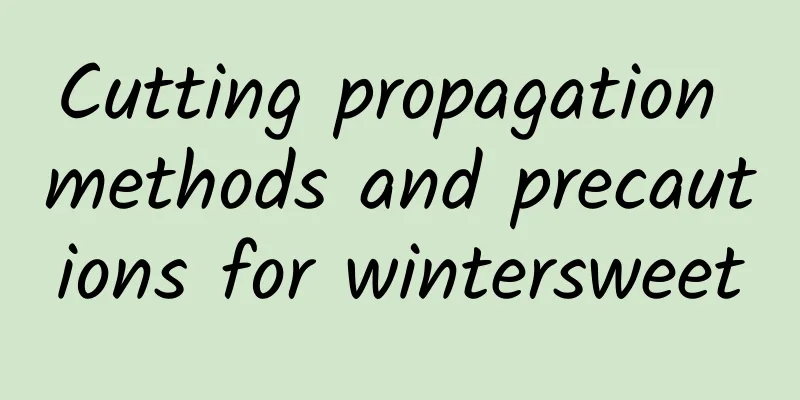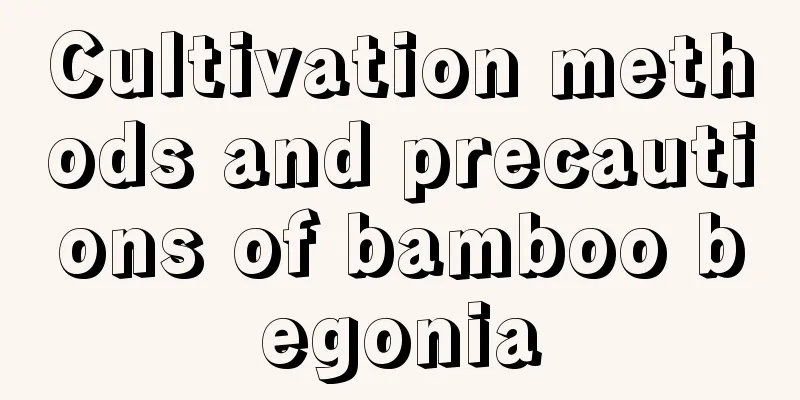The cultivation methods and precautions of magnolia

1. Maintenance methods1. Temperature: A warm environment is suitable for magnolia growth, which can be between 20 and 28 degrees. It has a certain degree of cold resistance. Generally speaking, there is no need to protect it from the cold when growing it in the southern region. However, if you live in the north, try to keep it indoors. 2. Light: Magnolia is a light-loving plant. However, very strong light is not enough. Therefore, you can directly place it in a place with diffuse light but no direct light, and there is no need to move it or provide shade. In winter, no shade is required. 3. Watering: Magnolia is sensitive to water. It is a plant that is afraid of both drought and waterlogging. Therefore, neither too much water nor too dry. In addition, when it is very hot in summer, additional watering is needed, which can be done around 6 o'clock in the morning. 4. Fertilization: Fertilization is required four times a year, and the timing needs to be noted. The first time is before flowering, using compound fertilizer. The second time is after flowering, using nitrogen fertilizer. The third time is in July and August, mainly using phosphorus and potassium fertilizers. The last time is before winter, when organic fertilizer can be applied. 2. Breeding techniques1. Reproduction: Sowing is commonly used. Selecting good quality seeds has a great impact on the germination rate. After that, they need to be soaked in water at about 50 degrees before sowing. The substrate can be sandy soil, which has a better effect, and some bone meal and other substances can also be mixed into it. Sowing can be done in rows. After sowing, keep the substrate moist. 2. Repotting: It is best to do so once a year. If the substrate is suitable, it can be repotted once every two years. Sandy soil can also be used as a substrate and mixed with base fertilizers such as bone meal. After changing the soil, place it in a cool place to allow the plant to adapt. 3. Problem diagnosis and treatment1. Disease: There may be "chlorosis", the leaves will turn yellow and then white, and in the most serious cases, the whole plant may die. Ferrous sulfate can be used to irrigate the roots, and assisted by measures such as loosening the soil. 2. Pests: There are many types of pests, such as "longhorn beetles", "red spiders", "frost moths", etc. It can be controlled by using pesticides such as cypermethrin and green Weilei. IV. Other issues1. Toxicity: It is non-toxic. Moreover, some parts of it can be used as medicine, such as its flower buds. 2. Flower language: Its flower language is "repay gratitude". This flower language is closely related to some of its legends. |
<<: Margarite flower cultivation methods and precautions
>>: A complete guide to the cultivation methods and precautions of Araucaria
Recommend
How to propagate the fortune tree by cuttings
The success of the money tree's cutting propa...
Cutting propagation method of Woniu and Tiger's roll
Cutting propagation time of Woniu and Tiger's...
When to plant potatoes and how to germinate them
1. When to plant potatoes Potatoes are also calle...
How to grow heart-leaf Hoya
1. Maintenance methods 1. Substrate selection: It...
Is it auspicious to grow osmanthus at home? Can I grow it at home?
1. It is auspicious to keep it at home From the p...
If you water too much in the summer, all the roses and succulents will die!
Rose Evaporation is relatively strong in summer, ...
Can Guanyin bamboo be grown in the bedroom?
1. Can it be placed in the bedroom? Speaking of t...
Can yam be hydroponically cultivated? Hydroponics cultivation methods and precautions
Can yam be grown hydroponically? Yam is called Di...
Pest and disease control of peaches
aphid Method: The prevention and control of aphid...
Tips for selecting white dragon fruit and how to keep it fresh longer
1. Selection Tips 1. Appearance: When choosing dr...
What is the best month to plant grape seedlings?
When to plant grape seedlings Grape seedlings are...
Green radish cultivation methods and precautions
Green radish can be placed in any corner of the h...
Moon Shadow Succulent Varieties
1. Types There are dozens of succulent varieties ...
How to breed Cross Star Brocade
1. Beheading The main way to propagate the Cross ...
What to do if the fortune tree grows too tall
The reason why the fortune tree grows too long Th...









